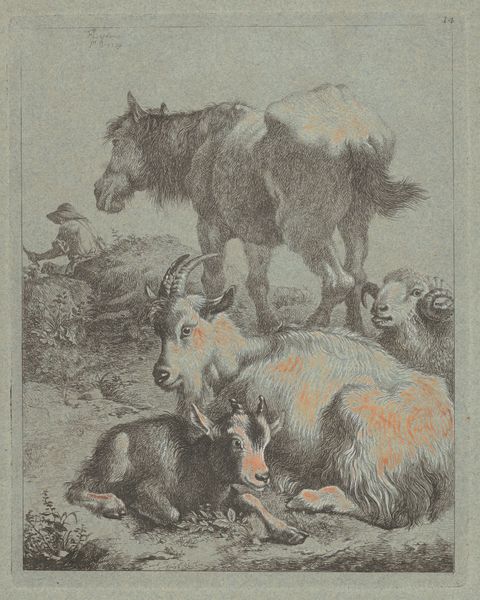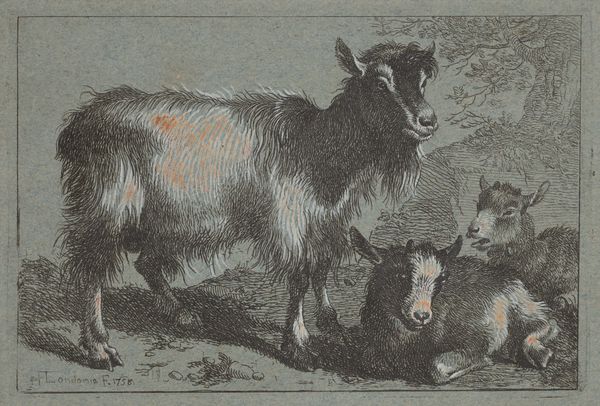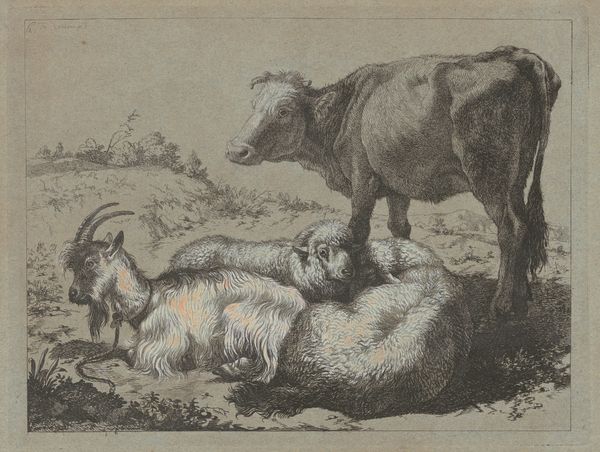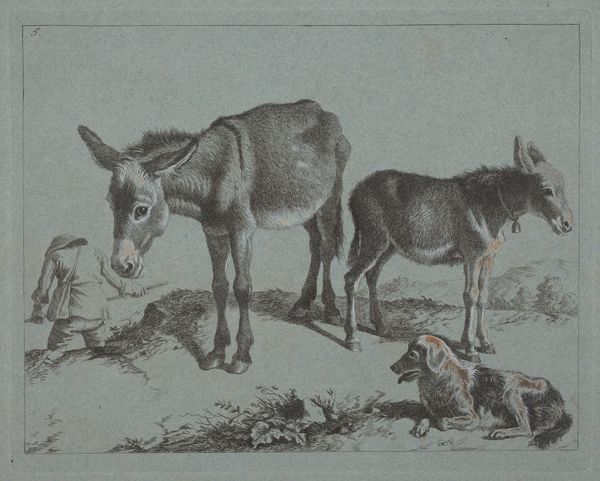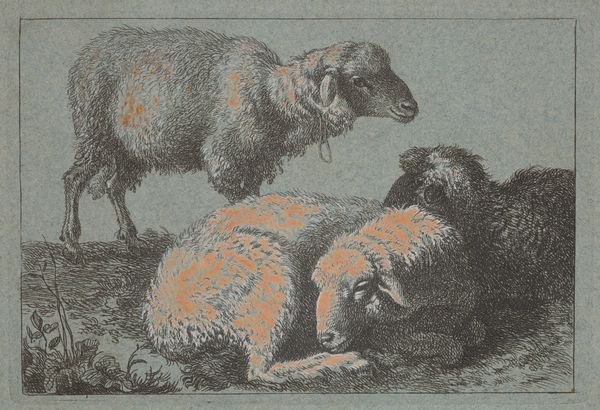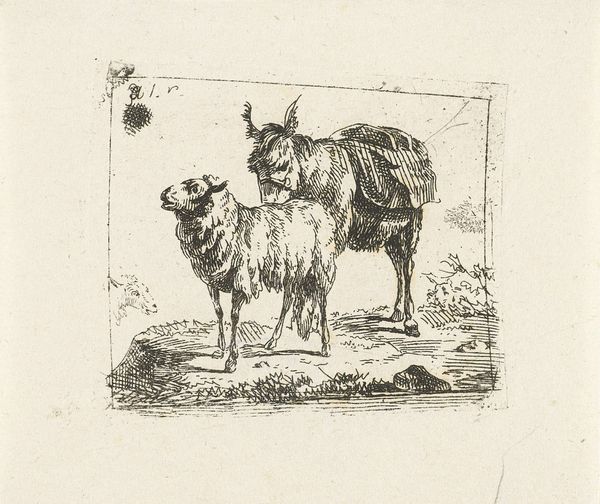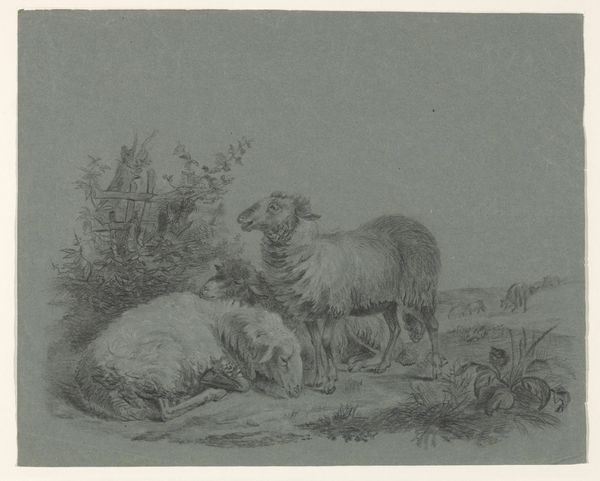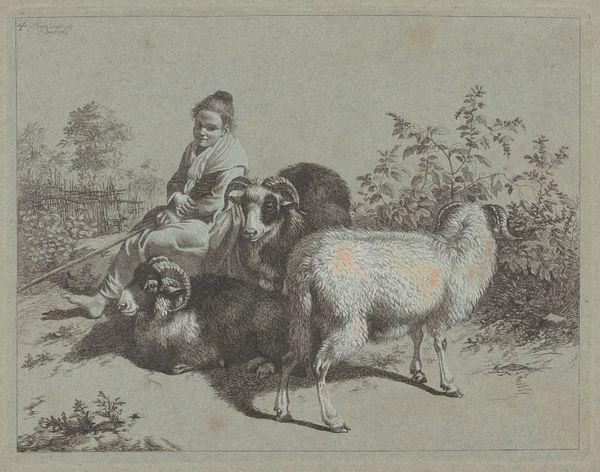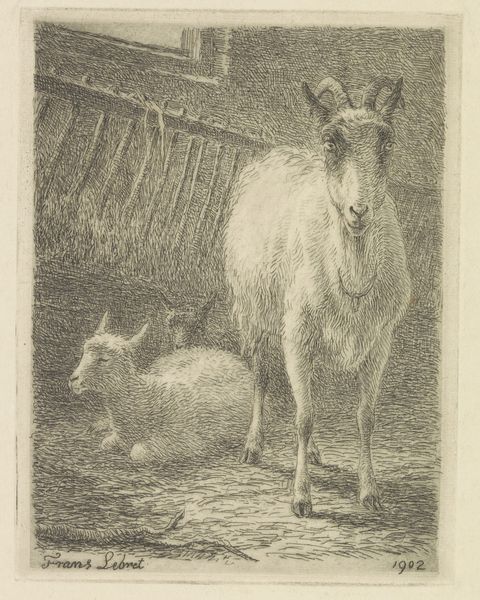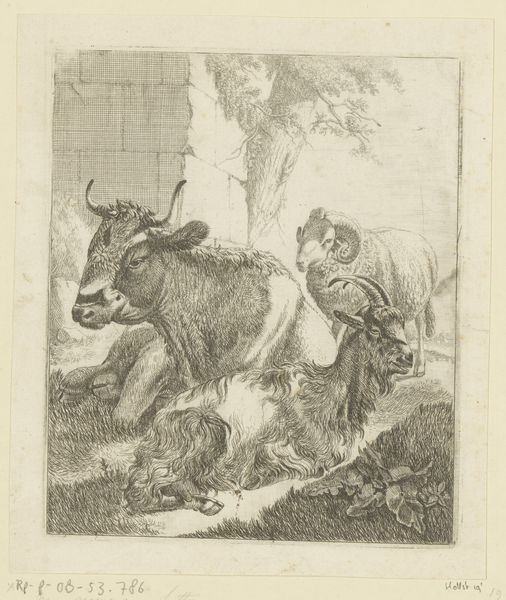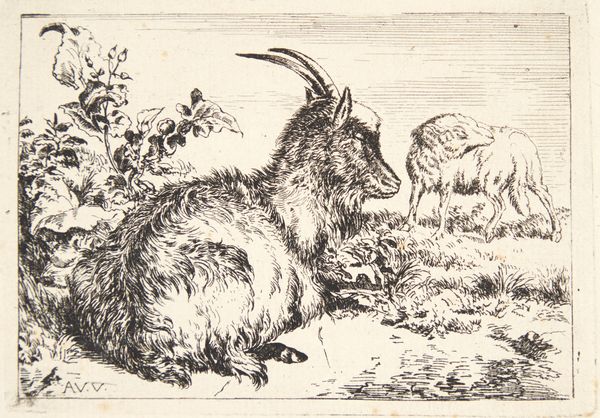
drawing, print, pencil
#
drawing
#
animal
# print
#
pencil sketch
#
landscape
#
pencil
#
genre-painting
#
rococo
Dimensions: plate: 17.6 × 14 cm (6 15/16 × 5 1/2 in.) sheet: 28.2 × 22.3 cm (11 1/8 × 8 3/4 in.)
Copyright: National Gallery of Art: CC0 1.0
Editor: Here we have Francesco Londonio's "Seated Shepherdess, a Ram, a Sheep and a Goat" from 1759, rendered in pencil. It feels… pastoral and quaint, a window into a simplified life. How do you interpret this work? Curator: I see it as more complex than simply "quaint." Londonio, working within the Rococo period, idealizes rural life, but it’s crucial to ask: idealization for whom? This image subtly reinforces the landed gentry's view of the peasantry, perhaps even masking the harsh realities of agricultural labor at the time. What do you notice about the power dynamics represented here? Editor: I hadn’t really considered power at all. The shepherdess seems… relaxed. Curator: Exactly. The visual language positions her as passively connected to the animals. Does her calmness negate agency? And whose vision does this serve? The gentry collected similar genre paintings. Do you think these pieces affected their outlook regarding gender roles or economics? Editor: I guess…it’s easy to see how someone in power might like this imagery. Like a scene of happy workers. Curator: Precisely. Consider how the "naturalness" of her role is portrayed; gender roles were also being negotiated in philosophical and political discourse. Do you feel the work actively silences the female narrative? Editor: That's a compelling way to read it! Curator: Works such as this push us to actively decode seemingly gentle and naive art. The piece is a conversation starter that considers who shapes whose narratives in culture. Editor: Thanks, that gives me a lot to reflect on regarding how representations can legitimize perspectives! Curator: Indeed. Keep asking such incisive questions!
Comments
No comments
Be the first to comment and join the conversation on the ultimate creative platform.
